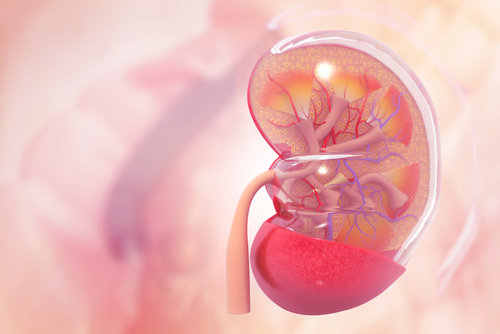Study Identifies Factors for Renal Recovery for AAV Patients on Dialysis for Kidney Damage
Written by |

Researchers say an important clinical assessment is determining whether ANCA-associated vasculitis patients who need dialysis at disease onset, due to severe kidney damage, can become dialysis independent. A study has now found that people with AAV are more likely to achieve that independence if their kidney manifestations are classified as focal or crescentic.
In other words, when the percentage of glomeruli — the filtering units in the kidney — with fibrous crescent or scarring manifestations exceeded 47.9%, the likelihood of renal recovery was very dim.
The study, “Pathological severity determines the renal recovery for anti-myeloperoxidase antibody-associated vasculitis requiring dialysis at disease onset: a retrospective study,” was published in the journal BMC Nephrology.
ANCA-associated vasculitis (AAV) is a blood vessel inflammatory condition that commonly affects the kidneys, leading some patients to need dialysis as a consequence of severe kidney damage.
Therapies that dampen the immune system’s response — called immunosuppressive therapies — are effective in improving patient outcomes, but greatly increase the risk of fatal infections. Thus, understanding which people with AAV will not recover their kidney function is key for reducing their immunosuppressive dose. That, in turn, reduces the risk of fatal complications.
Evidence suggests that some people with AAV benefit from blood plasma exchange — done with dialysis — to help them recover renal function.
Plasma is the part of the blood where scientists find disease-causing substances — like ANCA antibodies — that are attacking the body and causing symptoms. Thus, removing a person’s plasma and replacing it with a plasma substitute is an approach used to reduce damage done by these toxic substances.
However, there are no methods that predict which patients will recover from dialysis treatment.
Now, researchers in China sought better understanding of whether the classification of kidney manifestations — focal, crescentic, mixed, or sclerotic — had any influence on kidney recovery. That would help researchers predict which patients would no longer need dialysis.
Investigators examined 40 people with AAV, diagnosed between January 2005 and May 2017 at the Tianjin Medical University General Hospital, in China. All required dialysis at disease onset. Only those whose ANCA antibodies targeted the myeloperoxidase (MPO) protein were included in the study, due to the low number of people with proteinase 3 (PR3) antibodies.
In the study, dialysis was terminated once patients had an estimated glomerular filtration rate — a measure of kidney function — above 15 ml/min/1.73m², had no signs of excess potassium in the blood, and no heart failure or edema (swelling).
From the 40 selected patients, 14 received three to 10 sessions of plasma exchange treatment. Due to a shortness in plasma supply, individuals who did not receive plasma were treated with corticosteroid pulse therapy.
After treatment, 25 participants became independent of dialysis within three months. Of these, 13 reached complete renal recovery with a glomerular filtration rate above 60 ml/min/1.73m². Researchers noted that recovered patients had a higher platelet count (average 326.3 billion) compared with those who still needed dialysis (201.2 billion).
All kidney biopsies had at least 10 glomeruli, the functional kidney unit that filters blood, which helped researchers classify kidney damage as either focal (2 patients), crescentic (18), mixed (20), or sclerotic (0).
Researchers saw that individuals in the mixed class had significant lower renal recovery (40.0%) compared with those in the crescentic class (83.3%). The two patients with focal classification also recovered their kidney function.
Using statistical analysis, they found that having scarring or hardening of the glomeruli (glomeruloslerosis), with fibrous crescent (an irreversible kidney lesion) in more than 32.6% of the glomeruli, was a strong predictor of dialysis dependence.
If this combination was above 47.9%, it would be very unlikely for the patient to recover kidney function.
Finally, researchers found that renal recovery was significantly faster with plasma exchange (11.7 days) than corticosteroid pulse therapy (29.4 days).
These findings suggest that scarring of the glomeruli associated with kidney lesion “is a predictor of dialysis dependence” in people with AAV. A higher number of platelets is linked with better renal recovery, the study concluded.





